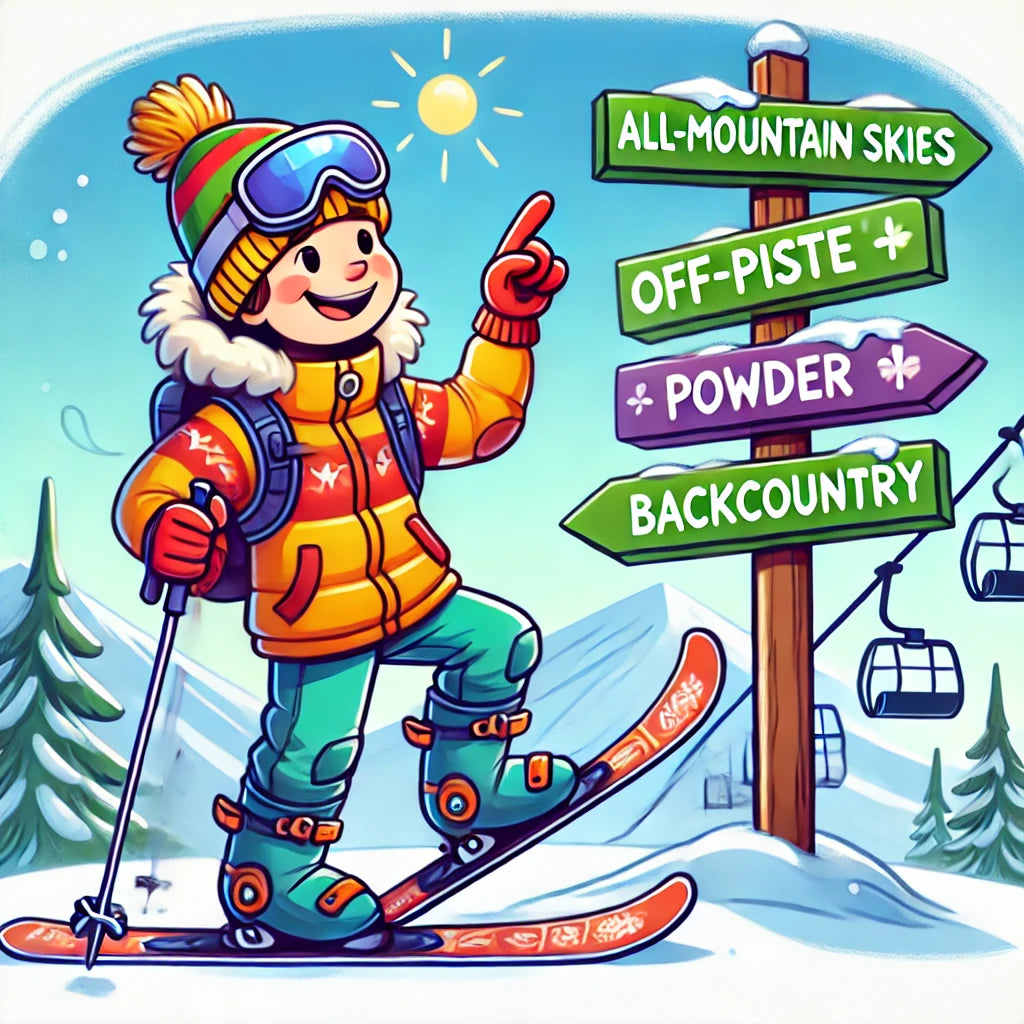Why Buying Skis in India is Unique
Skiing in India offers unique challenges and opportunities. Unlike the meticulously groomed pistes of Europe or North America,Indian ski destinations like Gulmarg, Auli, and Himachal feature mostly natural, off-piste terrain.
Plus, there are hardly any well stocked ski shops or places to buy ski gear,
If you're upgrading from rental gear or the skis used during institute courses, it's essential to understand the nuances of buying gear for Indian conditions. This guide covers everything from when to buy your first skis to building a one-ski quiver and progressing into ski touring in the Himalayas.
1. When Should You Buy Skis?

Timing is critical when investing in your first pair of skis. If you’ve completed an intermediate or advanced skiing course and plan to ski 10-15 days a year consistently for the next few seasons, it’s time to invest. Otherwise, renting skis while honing your skills is a better approach.
Explainer: Why Renting Works Initially
Renting allows you to experiment with different types of skis (e.g., lengths, widths, and flex patterns) without committing to a specific pair. This is especially useful in India, where conditions can vary greatly across destinations. Renting also gives you time to assess your long-term commitment to the sport.
2. Why All-Mountain Skis Are Perfect for Indian Conditions

India’s terrain is predominantly off-piste, with limited groomed trails. All-mountain skis are versatile tools designed to handle a wide variety of conditions, making them the ideal choice for skiing in India.
Why Indians Need a One-Ski Quiver
- Versatility: All-mountain skis handle powder, crud, and variable conditions effectively.
- Off-Piste Readiness: They offer stability and float in soft snow while maintaining edge grip on harder surfaces.
- Future-Proofing: Paired with the right bindings, they can double as ski touring skis.
Explainer: What is a One-Ski Quiver?
A one-ski quiver is a single pair of skis versatile enough to handle all types of skiing. For Indian skiers, this means a ski that works for both groomed slopes and off-piste terrain, eliminating the need for multiple specialized skis.
3. Start With Boots, Not Skis
If you’re unsure about committing to skis, start with boots. A well-fitted boot is the most crucial piece of ski equipment, directly impacting your comfort, control, and overall performance.

What to Look for in Boots:
- Flex Rating: Intermediate to advanced skiers should look for a flex rating of 120.
- Walk Mode: Essential for ski touring, this allows greater mobility during uphill climbs.
- Pin Binding Compatibility: Ensures your boots are compatible with modern touring bindings.
Explainer: Why Proper Fit Matters
Boots that fit poorly can cause pain, reduce control, and make skiing unenjoyable. In India, where professional boot fitting is limited, try boots in person whenever possible or consult sizing guides carefully if ordering online.
4. Should You Buy New or Used Skis?
Buying used skis can be a great option, especially in places like Gulmarg, where foreign skiers often sell their gear. However, knowing what to look for is crucial.
Checklist for Buying Used Skis:
- Base and Edges: Check for deep scratches, edge wear, or rust.
- Bindings: Ensure they’re functional and compatible with your boots.
- Age: Skis older than 7-10 years may lack modern design improvements.
Explainer: What Are Pin Bindings?
Pin bindings, also called tech bindings, are lightweight bindings designed for ski touring. They use metal pins to hold the boot in place at the toe, allowing for free heel movement during uphill climbs and locking the heel for downhill skiing. They’re more efficient and lighter than older frame bindings, making them ideal for backcountry skiing.
5. Progressing Into Off-Piste Skiing
Off-piste skiing is where most Indian skiers find themselves as they advance. It involves skiing natural terrain beyond the boundaries of groomed trails, offering a more challenging and rewarding experience.
How Off-Piste Skiing Progression Works:
- Side-Country Skiing: Start near resort boundaries (e.g., Gulmarg’s Phase 2 bowl) where terrain is ungroomed but accessible.
- Powder Skiing: Learn to navigate soft snow, a hallmark of off-piste skiing.
- Backcountry Skiing: Requires ski touring equipment and avalanche safety training to explore remote areas.
Explainer: Why Off-Piste Progression Matters
Off-piste skiing helps you develop skills in variable snow conditions, such as powder, crud, and ice. It also builds confidence for more challenging adventures like ski touring, which takes you deeper into the mountains.
6. Transitioning to Ski Touring

Ski touring is the natural progression for advanced skiers ready to explore untouched Himalayan backcountry. It requires additional skills and specialized gear.
What You’ll Need for Touring:
- Skis: All-mountain skis with pin bindings.
- Boots: Touring boots with walk mode and stiff flex.
- Climbing Skins: Attach to the ski base to provide grip on uphill climbs.
Explainer: How Touring Differs from Resort Skiing
Unlike resort skiing, which relies on chairlifts, touring involves climbing uphill under your own power. This demands greater fitness, navigation skills, and avalanche safety knowledge but rewards you with pristine, untouched terrain.
7. Budget Breakdown: What Does It Cost?
Skiing gear is an investment, but the right equipment lasts for years. Here’s a breakdown:
- Boots: ₹35,000–₹50,000
- Skis and Bindings: ₹50,000–₹70,000
- Poles and Accessories: ₹10,000–₹20,000
Explainer: Why Quality Gear Costs More
High-quality gear uses advanced materials, such as lightweight carbon or titanium laminates, for better performance and durability. While expensive, these materials significantly enhance your skiing experience and last longer.
8. Common Mistakes to Avoid

Buying the wrong gear can lead to frustration and wasted money. Here’s what to avoid:
- Choosing Carving Skis: They’re unsuitable for India’s off-piste conditions.
- Skipping Boots: Renting poorly fitted boots can ruin your skiing experience.
- Buying Outdated Equipment: Avoid frame bindings or skis older than 10 years.
- Neglecting Research: Understand your terrain, goals, and skill level before purchasing.

